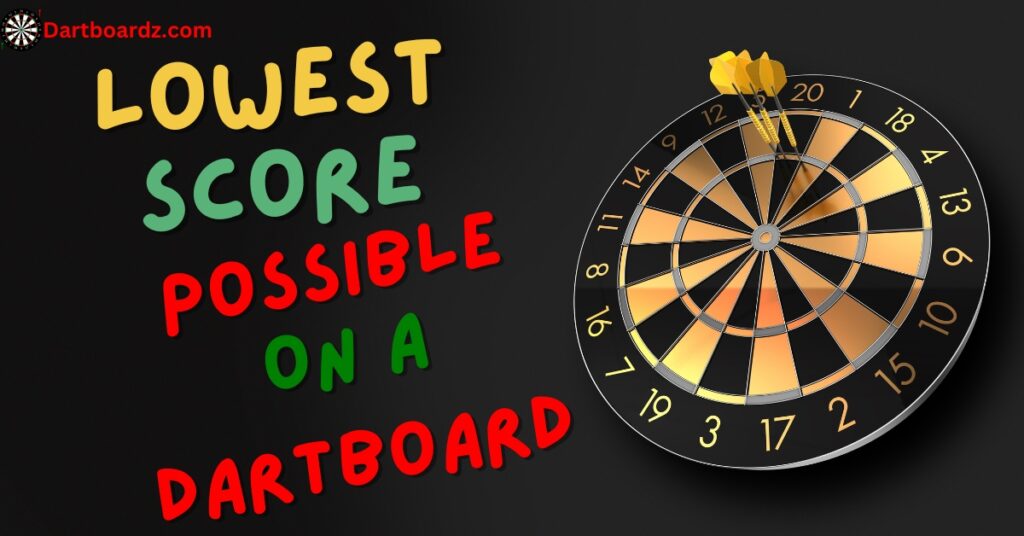Darts, a beloved pastime enjoyed in pubs and homes worldwide, is not just a game of skill and precision but also a game of strategy. Central to the game is the dartboard, a circular target divided into numbered segments. While many players aim for the highest possible scores, there’s a curious fascination with achieving the lowest score possible. Let’s delve into the intriguing world of discovering the lowest score on a dartboard.
The Anatomy of a Dartboard
Before we dive into the quest for the lowest score, it’s crucial to understand the layout of a standard dartboard. A traditional dartboard is divided into 20 numbered segments, each representing a different score from 1 to 20.
Surrounding the numbered segments are various scoring areas, including the double ring, the triple ring, the bullseye, and the outer bull. These areas offer different point values, adding complexity to the game.
Numbered Segments
The numbered segments on a dartboard are arranged in a specific sequence, with higher numbers alternating with lower ones around the board. The highest number, 20, is positioned at the top of the board, followed by 1 at the bottom.
This arrangement is designed to challenge players to target specific numbers strategically.
Scoring Rings
Apart from the numbered segments, a dartboard features scoring rings that multiply the points scored when hit. The outer ring, known as the double ring, doubles the score of the segment it surrounds.
Similarly, the inner ring, called the triple ring, triples the score. These rings offer players the opportunity to significantly boost their scores with well-aimed shots.
The Bullseye
At the center of the dartboard lies the coveted bullseye, divided into two distinct areas: the inner bull and the outer bull. The inner bull, also known as the bullseye or the double bull, is the smallest target on the board and awards the highest score, typically 50 points. Surrounding the inner bull is the outer bull, which usually scores 25 points.

Exploring the Quest for the Lowest Score
While the essence of darts revolves around achieving high scores, the challenge of attaining the lowest score has its allure. Unlike aiming for high scores, where precision and accuracy are paramount, aiming for the lowest score requires strategic planning and deliberate decision-making.
The Lowest Possible Score
In the realm of darts, the lowest possible score on a single throw is 1. Achieving this score involves hitting the number 1 segment without landing in the double or triple ring. While it may seem straightforward, the task becomes increasingly difficult when considering the precision required to avoid the adjacent segments and scoring areas.
Strategies for Achieving the Lowest Score
Achieving the lowest score on a dartboard requires careful consideration of one’s throwing technique and target selection. Players aiming for a score of 1 must carefully aim for the number 1 segment while avoiding the double and triple rings. This often entails adjusting one’s throwing angle and force to ensure the dart lands precisely where intended.
Challenges and Considerations
While the quest for the lowest score may seem like a simple endeavor, it presents various challenges and considerations for players. Factors such as dart weight, thrower’s technique, and board condition can significantly impact the outcome of each throw. Additionally, the psychological aspect of deliberately aiming for a low score adds an extra layer of complexity to the game.
In the next section, we’ll delve deeper into the strategies and techniques employed by players in pursuit of the lowest possible score on a dartboard. We’ll explore common pitfalls, expert insights, and the thrill of achieving this elusive feat.
Join us as we unravel the mysteries of dart scoring and embark on a journey of precision and strategy.
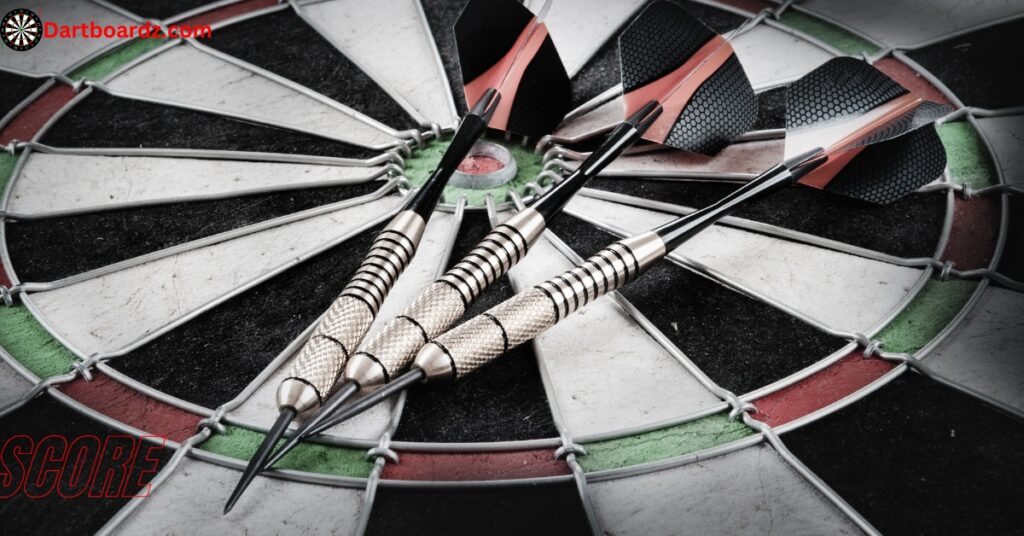
Mastering the Art of Low Scoring
In the pursuit of the lowest score on a dartboard, players must adopt a unique approach that diverges from conventional dart strategies. While the task may seem daunting, mastering the art of low scoring requires a combination of precision, strategy, and patience. Let’s explore the techniques and tactics employed by seasoned players in their quest for minimal points.
Perfecting the Throw
Achieving a low score on a dartboard begins with mastering the fundamentals of the throw. Players must hone their throwing technique to ensure consistency and accuracy in their shots. This involves maintaining a steady grip, a controlled release, and a smooth follow-through motion. By refining their throwing mechanics, players can increase their chances of hitting the desired target while minimizing errors.
Adjusting the Aim
Unlike aiming for high scores, where players target specific numbered segments or scoring rings, aiming for a low score requires precise adjustment of the aim. Players must carefully align their sight lines to ensure the dart lands in the desired segment without veering into adjacent areas.
This often involves making subtle adjustments to the angle and trajectory of the throw to account for variations in board position and player stance.
Strategic Target Selection
In the quest for the lowest score, strategic target selection is paramount. While the number 1 segment may seem like the obvious choice, experienced players may opt for alternative targets to minimize the risk of inadvertently scoring higher points.
By strategically choosing their targets based on board position and thrower’s proficiency, players can increase their chances of achieving the coveted score of 1.
READ NEXT: Mastering Darts Scoring: 10 Tips and Techniques for Success
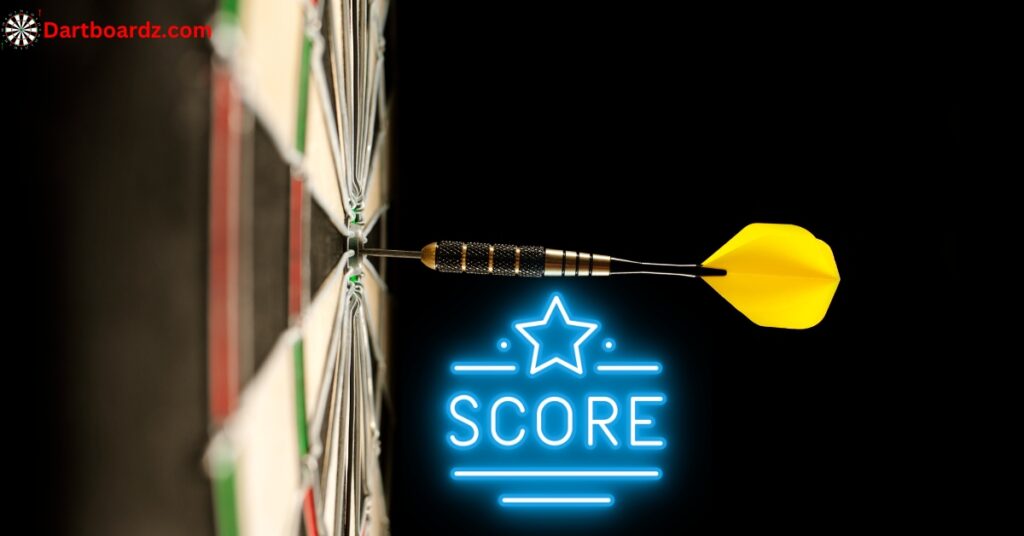
Overcoming Challenges
Despite their best efforts, players pursuing the lowest score on a dartboard inevitably encounter challenges along the way. Factors such as dart deflection, board rotation, and external distractions can disrupt their focus and derail their attempts.
However, seasoned players understand that overcoming these challenges is part of the game and approach each throw with resilience and determination.
Dart Deflection
Dart deflection, caused by factors such as bounce-outs or collisions with adjacent darts, poses a significant challenge to players aiming for a low score.
Even a slight deviation from the intended trajectory can result in an undesired increase in points, thwarting their efforts to achieve the lowest possible score. To mitigate this risk, players must remain vigilant and adjust their throwing technique accordingly.

Board Rotation
As games progress, dartboards may undergo rotation due to repeated dart impacts, causing the board to shift slightly from its original position. This rotational movement can alter the angle and orientation of the segments, making it challenging for players to maintain consistency in their throws.
To counteract board rotation, players may periodically adjust their aim and throwing technique to compensate for any changes in board position.
External Distractions
In a competitive environment, external distractions such as noise, movement, or audience presence can disrupt a player’s concentration and focus. While seasoned players develop techniques to block out distractions and maintain their composure, overcoming external factors remains a constant challenge in the pursuit of low scoring.
By cultivating mental resilience and practicing mindfulness, players can minimize the impact of external distractions on their performance.
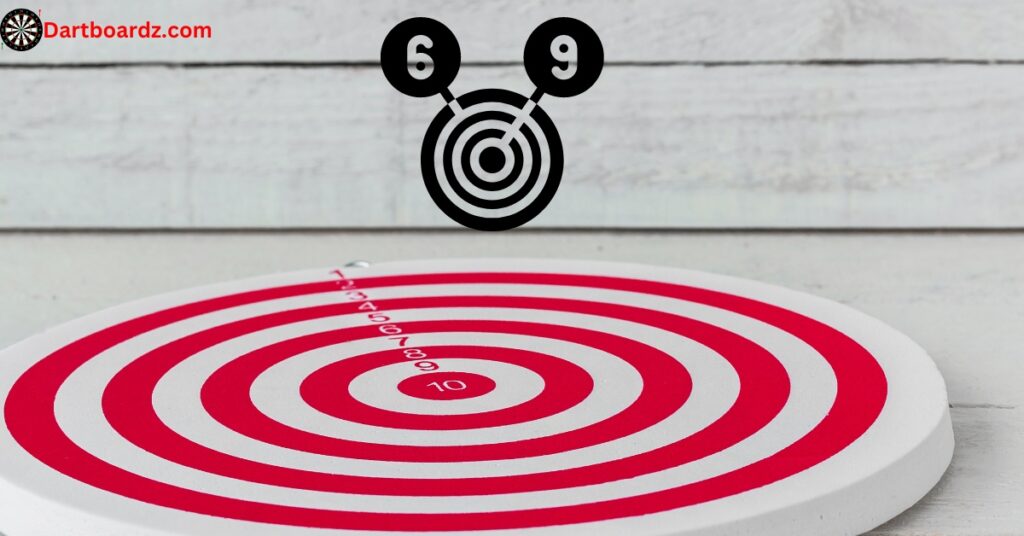
The Thrill of Achievement
Despite the myriad challenges and obstacles encountered along the way, the thrill of achieving the lowest score on a dartboard is unparalleled. For players who have dedicated countless hours to mastering their craft, the moment of success represents the culmination of their efforts and perseverance. Whether achieved through meticulous planning or sheer luck, the satisfaction of attaining the coveted score of 1 serves as a testament to their skill and determination.
In the final section, we’ll explore the psychology behind low scoring in darts and its implications for player performance. We’ll delve into the mindset required to excel in the pursuit of minimal points and examine the psychological factors that influence player behavior on the dartboard. Join us as we unravel the mysteries of the human mind and its impact on dart scoring.
The Psychology of Low Scoring
In the realm of darts, achieving the lowest score on a dartboard is not merely a test of skill and technique but also a demonstration of psychological prowess.
Players who excel in the pursuit of minimal points must possess a unique mindset characterized by focus, patience, and adaptability. Let’s delve into the psychology behind low scoring in darts and explore its implications for player performance.
The Mindset of Minimalism
At the heart of low scoring in darts lies the concept of minimalism—a deliberate approach focused on achieving the desired outcome with the least possible effort or resources. Players aiming for the lowest score must adopt a minimalist mindset characterized by simplicity, efficiency, and precision. This mindset compels players to strip away distractions and unnecessary complexities, allowing them to focus solely on the task at hand.

Focus and Concentration
Achieving a low score on a dartboard requires unwavering focus and concentration. Players must maintain their mental clarity and composure amidst the chaos of the game, blocking out distractions and external stimuli. By channeling their attention towards their target and visualizing their desired outcome, players can enhance their concentration and increase their chances of success.
Patience and Persistence
Patience is a virtue often overlooked in the fast-paced world of darts. Players pursuing the lowest score must exhibit patience and persistence in their approach, understanding that achieving their goal may require multiple attempts and adjustments. By embracing setbacks and learning from their mistakes, players can develop resilience and perseverance, key traits essential for success in the pursuit of minimal points.
The Influence of Psychology
Beyond its practical implications, the psychology of low scoring in darts also plays a significant role in shaping player behavior and decision-making. Psychological factors such as confidence, motivation, and self-control influence how players approach each throw and navigate the complexities of the game.
Confidence and Self-Belief
Confidence is a cornerstone of success in any competitive endeavor, and darts is no exception. Players aiming for the lowest score must possess unwavering self-belief in their abilities, trusting in their skills and intuition to guide them towards their goal.
Confidence enables players to approach each throw with conviction and assertiveness, increasing their likelihood of achieving the desired outcome.
Motivation and Determination
Motivation serves as the driving force behind the pursuit of low scoring in darts. Whether fueled by personal ambition, competitive spirit, or sheer curiosity, players must possess a strong sense of motivation and determination to succeed.
Motivation provides players with the energy and enthusiasm needed to overcome obstacles and persevere in the face of adversity, propelling them towards their ultimate goal.
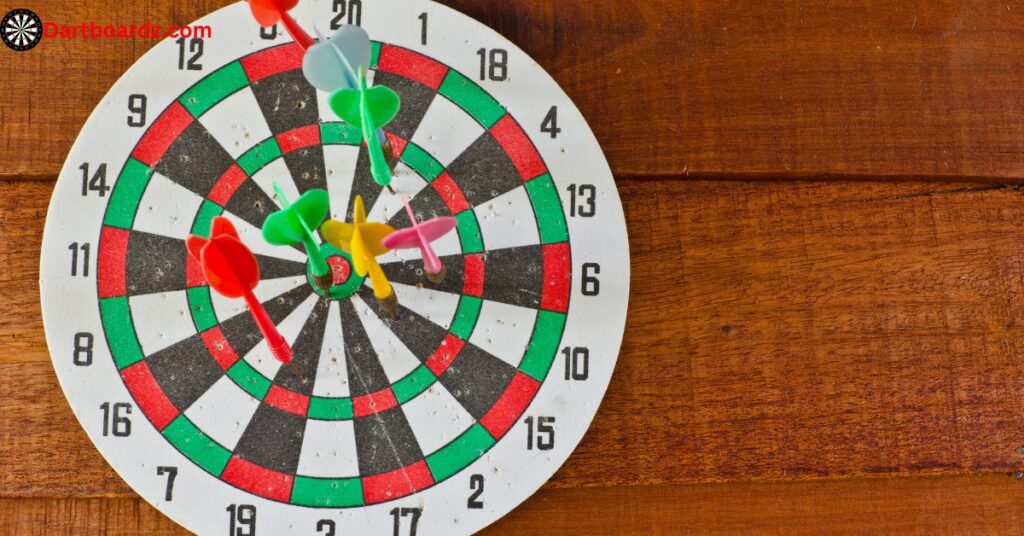
Self-Control and Emotional Regulation
Maintaining self-control and emotional regulation is essential for success in the pursuit of low scoring. Players must learn to manage their emotions and impulses, avoiding impulsive decisions or reckless actions that may jeopardize their chances of success.
By cultivating self-awareness and emotional resilience, players can maintain their composure under pressure and make informed choices that contribute to their overall performance.
Conclusion:
The quest for the lowest score on a dartboard is a fascinating journey that combines skill, strategy, and psychology in equal measure. From mastering the intricacies of the throw to navigating the complexities of the human mind, players embarking on this quest face myriad challenges and obstacles along the way. Yet, it is through perseverance, determination, and a touch of psychological prowess that they ultimately achieve success.
As we conclude our exploration of discovering the lowest score possible on a dartboard, we invite you to reflect on the lessons learned and insights gained. Whether you’re a seasoned player seeking to hone your skills or a curious observer intrigued by the mysteries of dart scoring, may this journey inspire you to approach the game with renewed enthusiasm and appreciation for its intricacies.
FAQs:
What is the lowest score you can achieve on a dartboard?
The lowest possible score on a dartboard is 1. This score is achieved by hitting the number 1 segment without landing in the double or triple ring.
Is achieving the lowest score on a dartboard difficult?
Yes, achieving the lowest score requires precision, strategy, and deliberate aiming. While it may seem straightforward, factors such as dart deflection, board rotation, and external distractions can make it challenging.
. What techniques can I use to aim for the lowest score?
To aim for the lowest score, you need to perfect your throwing technique, adjust your aim carefully, and strategically select your targets. Focus on maintaining a steady grip, controlled release, and smooth follow-through motion to increase accuracy.
Can I use any dartboard to aim for the lowest score?
Yes, you can use any standard dartboard to aim for the lowest score. However, it’s essential to ensure that the board is in good condition, free from excessive wear and tear, and properly positioned to minimize board rotation.
Are there specific rules for aiming for the lowest score in darts?
While there are no specific rules governing aiming for the lowest score in darts, players must adhere to the standard rules of the game, including throwing from the regulation distance and following the scoring system. The goal is to hit the desired segment without scoring higher points unintentionally.

